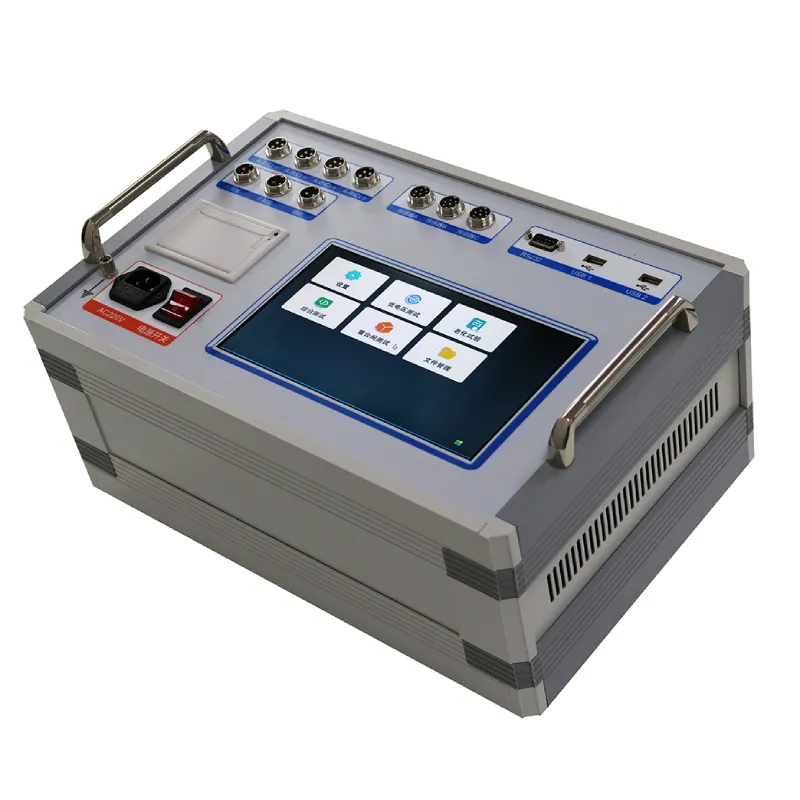 English
English


oil tan delta tester
Understanding the Oil Tan Delta Tester A Key Tool in Materials Testing
The oil tan delta tester is an advanced instrument used to measure the dielectric properties of insulating materials, particularly those used in electrical applications. The tan delta (or loss tangent) is a critical parameter in assessing the reliability and performance of insulating materials, as it provides insight into how much energy is lost as heat in a dielectric when it is subjected to an electrical field. This article explores the significance of the oil tan delta tester, its operation, and its applications across various industries.
What is Tan Delta?
Tan delta is defined as the ratio of the resistive (loss) current to the capacitive (storage) current flowing through a dielectric material. It is a measure of the dielectric losses that occur in the material when it is exposed to an alternating electric field. A low tan delta value indicates good insulation properties, meaning the material can effectively store electrical energy with minimal losses. Conversely, a high tan delta value signifies poor insulation and can indicate aging, moisture ingress, or other forms of degradation.
Importance of Tan Delta Testing
Regular testing of insulating materials using oil tan delta testers is crucial for several reasons
1. Preventive Maintenance By identifying potential issues before they escalate, facilities can avoid catastrophic failures that could lead to downtime and significant repair costs. Early detection of elevated tan delta values may signal the need for maintenance or replacement of insulation.
2. Quality Control In manufacturing processes, especially in industries such as power generation and transmission, quality control is of utmost importance. Tan delta testing ensures that materials meet strict industry standards for dielectric performance, ensuring both safety and reliability.
3. Performance Assessment The characteristics of insulating materials can change over time due to factors such as temperature fluctuations, exposure to contaminants, and mechanical stress. Tan delta testing provides vital data that can help assess the ongoing performance of materials in service.
4. Research and Development In the development of new insulating materials, tan delta testing plays a pivotal role in evaluating their performance and suitability for specific applications. Researchers can use the data to optimize material formulations and improve insulation technology.
How Does an Oil Tan Delta Tester Work?
oil tan delta tester

An oil tan delta tester operates by applying an alternating current (AC) voltage to a sample of insulation material submerged in a dielectric fluid (often an oil). The setup typically includes electrodes that measure the current flowing through the sample. During testing, the instrument calculates the phase angle difference between the voltage and current, enabling it to determine the tan delta value of the material.
The oil used in the tester serves not only as a coolant but also as a dielectric medium that enhances the accuracy of measurements. The dielectric properties of the oil itself are well-understood, allowing for more precise evaluations of the insulating material's performance.
Applications of Oil Tan Delta Testing
The oil tan delta tester finds applications across multiple sectors, including
- Electrical Utilities Power plants and grid facilities employ tan delta testing to ensure the reliability of transformers, cables, and other equipment against electrical failures.
- Manufacturing Companies producing capacitors, insulators, and circuit boards rely on this testing method to maintain high quality and performance standards.
- Aerospace and Defense In these industries, materials must meet stringent safety standards, where the effectiveness of insulating materials can significantly influence equipment performance.
- Renewable Energy As the use of renewable energy sources like wind and solar increases, monitoring the integrity of insulating materials in these systems is paramount for long-term reliability.
Conclusion
The oil tan delta tester is an essential tool in the field of materials testing, providing critical insights into the performance and reliability of insulating materials. By continuously monitoring tan delta values, industries can safeguard their operations, improve product quality, and invest in innovative materials with enhanced dielectric properties. As technology advances, these testers will continue to play a vital role in ensuring the integrity of electrical systems worldwide.
-
Differences between open cup flash point tester and closed cup flash point testerNewsOct.31,2024
-
The Reliable Load Tap ChangerNewsOct.23,2024
-
The Essential Guide to Hipot TestersNewsOct.23,2024
-
The Digital Insulation TesterNewsOct.23,2024
-
The Best Earth Loop Impedance Tester for SaleNewsOct.23,2024
-
Tan Delta Tester--The Essential Tool for Electrical Insulation TestingNewsOct.23,2024





